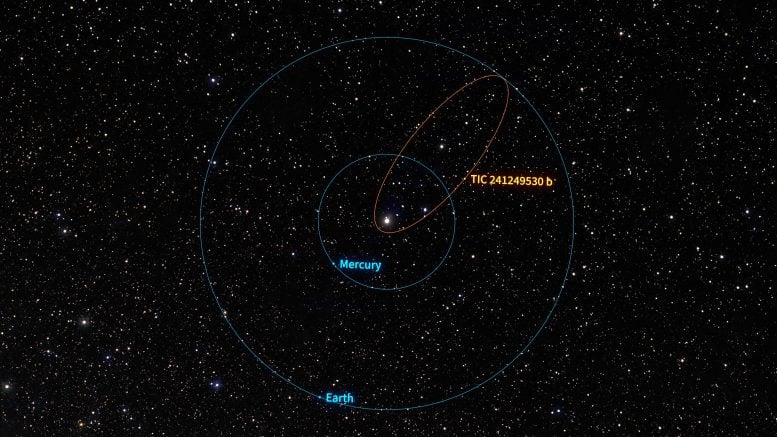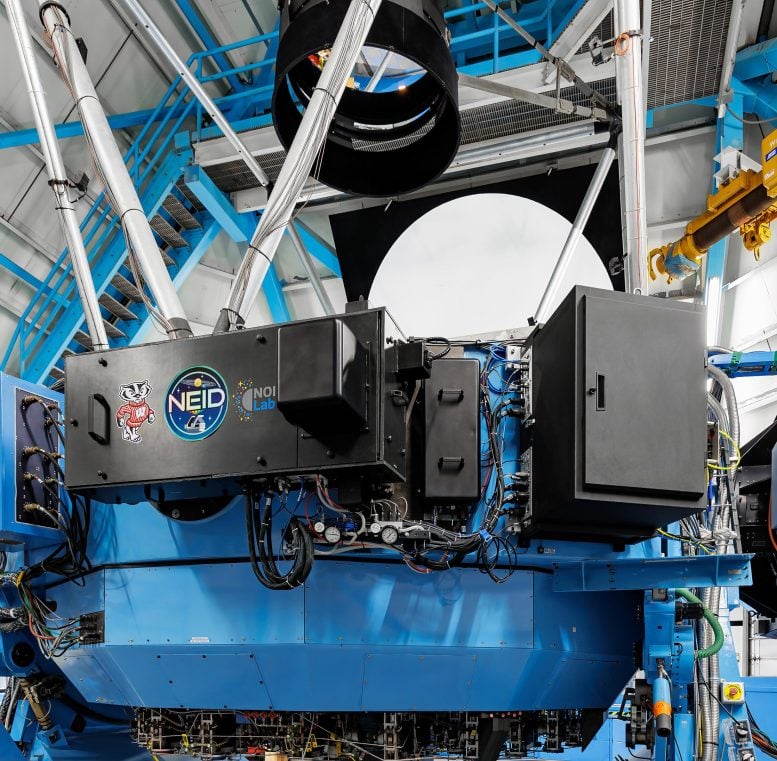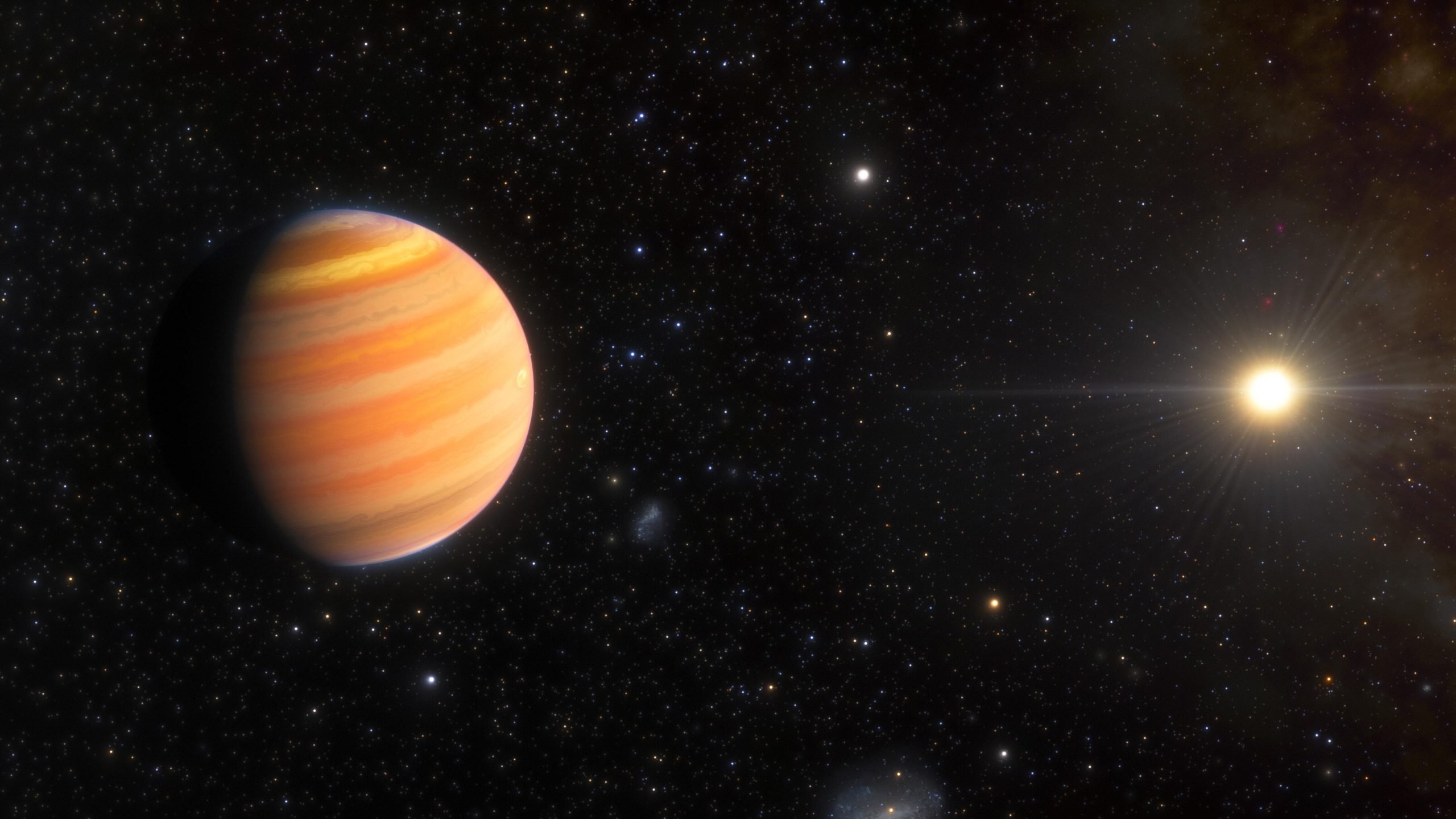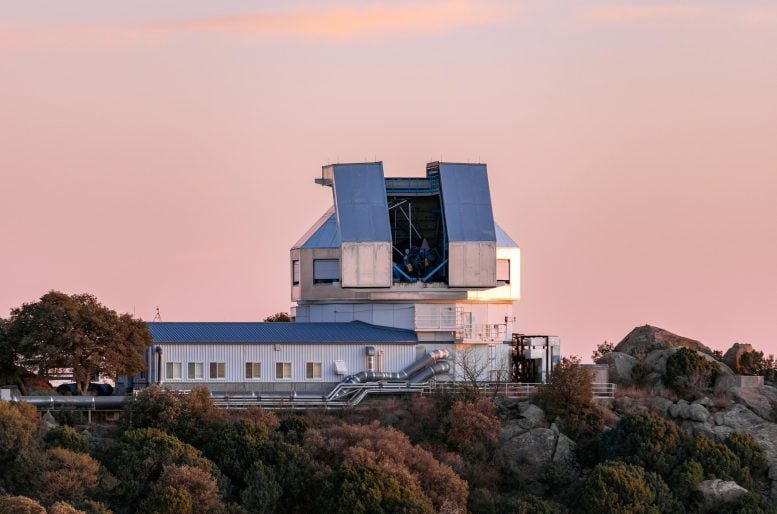This artist’s impression shows a Jupiter-like exoplanet that is on its way to becoming a hot Jupiter — a large, Jupiter-like exoplanet that orbits very close to its star. Using the WIYN 3.5-meter telescope at the U.S. National Science Foundation Kitt Peak National Observatory, a Program of NSF NOIRLab, a team of astronomers found that this exoplanet, named TIC 241249530 b, follows an extremely elliptical orbit in the direction opposite to the rotation of its host star. These unique orbital characteristics hint at the planet’s formation history as well as its future trajectory, allowing the team to determine that TIC 241249530 b will eventually migrate inward to a tighter, more circular orbit. Discovering this exoplanet pre-migration lends valuable insight into how hot Jupiters form and evolve over time. Credit: NOIRLab/NSF/AURA/J. da Silva (Spaceengine)
An
Advanced Observational Techniques and Findings
The discovery of this exoplanet, named TIC 241249530 b, originated with the detection by NASA’s Transiting Exoplanet Survey Satellite (TESS) in January 2020 of a dip in a star’s brightness consistent with a single Jupiter-sized planet passing in front of, or transiting, it. To confirm the nature of these fluctuations and eliminate other possible causes, a team of astronomers used two instruments on the WIYN 3.5-meter Telescope at the U.S. National Science Foundation Kitt Peak National Observatory (KPNO), a Program of NSF NOIRLab.
The team first utilized the 
This illustration shows the orbit of the newly discovered Jupiter-like exoplanet named TIC 241249530 b, shown in comparison to the orbits of Mercury and Earth in our own Solar System. TIC 241249530 b follows one of the most stretched-out orbits of any transiting exoplanet known and also orbits its host star backwards, meaning in the direction opposite the star’s rotation. Credit: NOIRLab/NSF/AURA/R. Proctor
Arvind Gupta, NOIRLab postdoctoral researcher and lead author of the paper published in Nature, praised NESSI and NEID as being critical to the team’s efforts to characterize and confirm the exoplanet’s signal. “NESSI gave us a sharper view of the star than would have been possible otherwise, and NEID precisely measured the star’s spectrum to detect shifts in response to the orbiting exoplanet,” explained Gupta. Gupta particularly noted the unique flexibility of NEID’s observation-scheduling framework as it allows for swift adaptation of the team’s observing plan in response to new data.
“The WIYN telescope is playing a crucial role in helping us understand why the planets found in other solar systems can be so different from system to system,” said NSF’s Chris Davis, program director for NSF NOIRLab. “The collaboration between NSF and NASA on the NN-EXPLORE program continues to yield impressive results in exoplanet research.”
This animation shows the orbit of the newly discovered Jupiter-like exoplanet named TIC 241249530 b, shown in comparison to the orbits of Mercury and Earth in our own Solar System. TIC 241249530 b follows one of the most stretched-out orbits of any transiting exoplanet known and also orbits its host star backward, meaning in the direction opposite the star’s rotation. If this planet was part of our Solar System its orbit would stretch from its closest approach ten times closer to the Sun than Mercury all the way out to its most distant extent at Earth’s distance. This extreme orbit would cause temperatures on the planet to vary between that of a summer’s day to hot enough to melt titanium. Credit: NOIRLab/NSF/AURA/R. Proctor
Implications of Eccentric and Retrograde Orbits
Detailed analysis of the spectrum confirmed that the exoplanet is approximately five times more massive than Jupiter. The spectrum also revealed that the exoplanet is orbiting along an extremely eccentric, or stretched-out, path. The eccentricity of a planet’s orbit is measured on a scale from 0 to 1, with 0 being a perfectly circular orbit and 1 being highly elliptical. This exoplanet has an orbital eccentricity of 0.94, making it more eccentric than the orbit of any other exoplanet ever found via the transiting method [1]. For comparison, 
The interior of the WIYN 3.5-meter Telescope, located at the U.S. National Science Foundation Kitt Peak National Observatory, a Program of NSF NOIRLab. This telescope hosts the NEID instrument, which is a state-of-the-art exoplanet-discovery machine. Credit: KPNO/NOIRLab/NSF/AURA/J.Pollard






















Discussion about this post